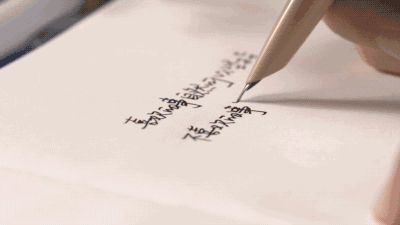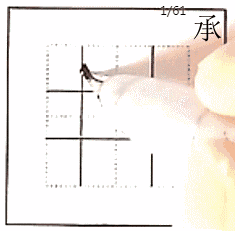15 Calligraphy Practice Network is dedicated to cultivating hard-pen calligraphy in primary school, junior high school, high school and adults, from the initial scrawling to the current form of fonts and standardized writing. Practicing calligraphy is not achieved overnight. It can be said to be a persistent practice. It is very necessary to start practicing calligraphy from an early age. The best time to start practicing calligraphy is 4-5 years old. At this time, practice some simple things, such as pictures, numbers, letters, pinyin, etc. When you enter elementary school, you will officially start to read and write. Children and parents must pay attention to it.

The main reason for poor handwriting is that the foundation was not laid well in childhood. Many adults are not aware of the importance of practicing calligraphy, let alone primary school students who have just started learning to write. If they can do their homework well according to the requirements of teachers and parents, It’s already pretty good. I’m tired from shouting all day long and want to go home, go out and play games. There are many reasons for this problem. Of course, we parents are also responsible.
The main reason for poor handwriting is that primary school has not laid a good foundation. Many adults are not aware of the importance of practicing calligraphy, let alone primary school students who have just started to learn to write. It is enough for them to do their homework according to the pace of their teachers and parents. Very good, but I still complain that I am tired all day long and want to go home, go out and play computer games. What is the reason for this phenomenon? Parents have a great responsibility. If your parents tell you at a very young age how serious the consequences of poor handwriting are, and provide you with correct guidance, your results may be better now.
Then let’s talk about the benefits and importance of practicing calligraphy in detail. They are listed in the following ten points: The ten benefits of practicing calligraphy:
1. Content selection and interest cultivation
The textbook provides guidance on the essentials of pen holding when writing new characters, which can not only improve students' Chinese character writing ability, but also deepen literacy memory; students' hard-pen assignments include selected content from Three Hundred Thousands, Zhuge Liang's Commandments, Zhu Xi's Family Instructions, Four Books and Five Classics, Disciple Rules, and celebrities. Famous quotes, aphorisms, ancient poems, etc. not only have educational significance, but also can stimulate students' curiosity, cultivate students' interest in reading, expand students' reading coverage, improve students' reading level, and achieve both practicing calligraphy and mental training, teaching and educating people.
2. Essentials of soft pen writing
When a calligraphy student is copying, he puts the copy on the bottom of the paper and writes according to it, so that the structure and position will be reasonable. When copying, he puts the copy on the left side and compares and writes, so that the writing skills can be improved. The two methods of copying cannot be neglected. Knowing the meaning of the brushwork and copying the position, the two complement each other; the teacher also teaches you step by step, and the effect is particularly good!
3. Cultivate the habit of doing things carefully
Through scientific calligraphy training, children constantly observe the copybooks during calligraphy practice and write beautiful calligraphy by imitating the shape of the calligraphy. Precisely because constant observation has sharpened children's eyesight, they will naturally be able to carefully review the questions and carefully check the answers during the exam questions.
4. Learning enthusiasm
As long as your child's handwriting is good, he will be praised by the teacher in public, and every child will learn from you. The more children are praised, their self-confidence will increase, and their enthusiasm for learning will naturally increase, thus forming a virtuous cycle. .
5. Physical and mental training

It is very important to guide children correctly. If a child can practice calligraphy for 30 minutes every day, it is a very good exercise for his willpower. If he must practice calligraphy within a fixed time period no matter what happens every day, it will also be a good exercise for the child's execution ability. Great workout.
6. Create a good impression
Words are like people. There are often not a few people in a class who can write well. If a child's handwriting is good, the teacher will have a good impression of him, and he will always think of him when something happens, thus getting more care, class cadre Selection (opportunities for ability training), weekly speeches under the national flag, selection of outstanding young pioneers, selection of three good students, and scholarships will all be taken into consideration.
7. Develop character
One stroke at a time, copy slowly. To practice calligraphy well, children need to overcome their impatience and write slowly. After practicing calligraphy for a period of time, they can develop a quiet and calm character and train themselves to be calm and calm when things happen. mentality.
8. Develop your brain

The human brain is never-ending, and the more you practice, the more active it becomes. When practicing calligraphy, you cannot just write. The brain must be thinking. Hands-on means using the brain. The two are inseparable. Children develop it unintentionally. It has the ability to judge lines, shapes, and spatial positions, which is particularly effective in developing right-brain intelligence!
9. Aesthetics
Lu Xun once said: “Chinese writing has three beauties: the beauty of meaning touches the heart, the beauty of sound touches the ears, and the beauty of form touches the eyes.
10. Develop a rigorous and down-to-earth style of work
Chinese characters in China pay attention to the structure of frames. In the process of practicing calligraphy, students will intentionally or unintentionally form the habit of being meticulous. Over time, students will develop a rigorous style, not only in writing, but also in learning. It will have a subtle impact on life. Moreover, it is not a day's work to practice calligraphy well. It takes a long time of patient copying to gain results. Students can practice writing step by step according to certain standards, which can effectively exercise students' perseverance and cultivate students' ability to write. A good down-to-earth style.









